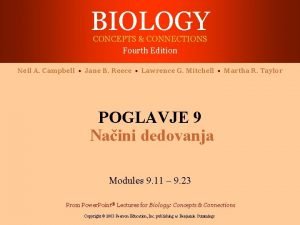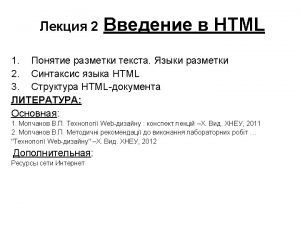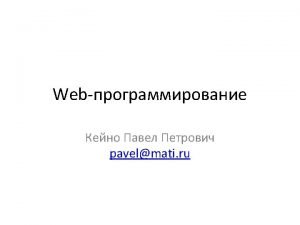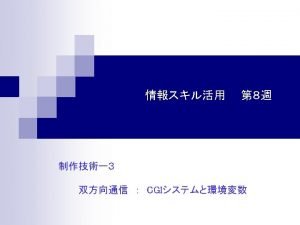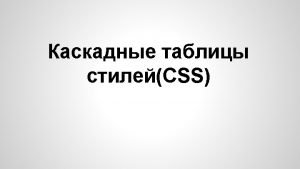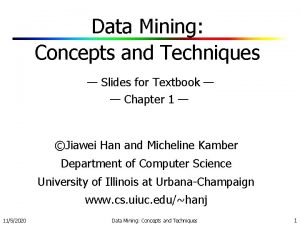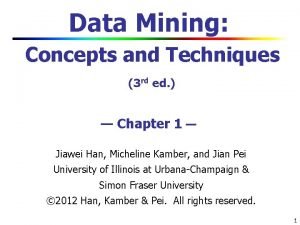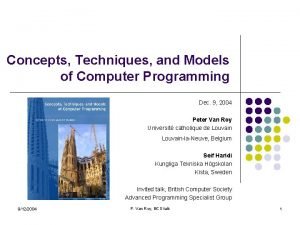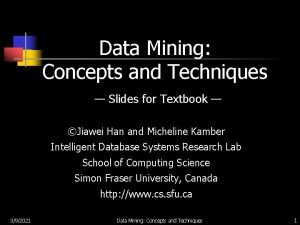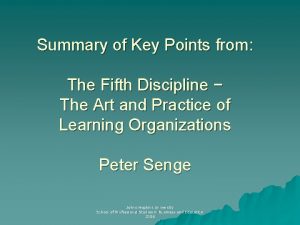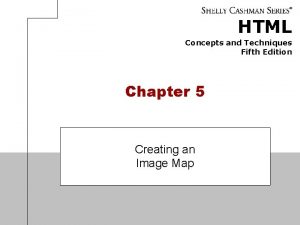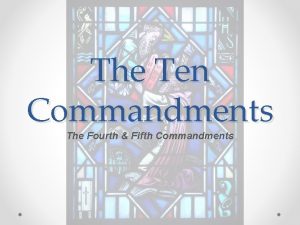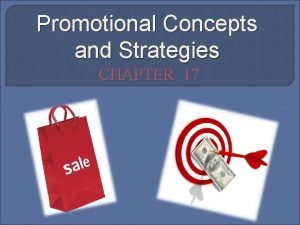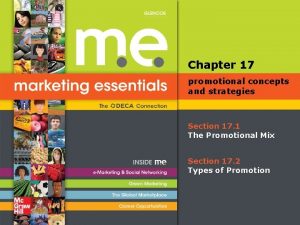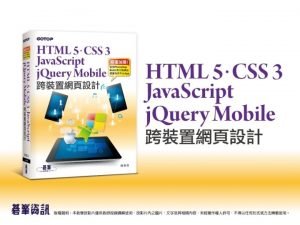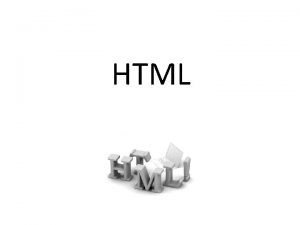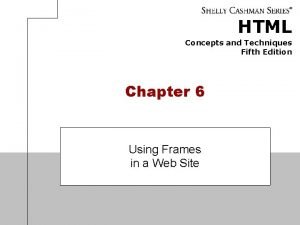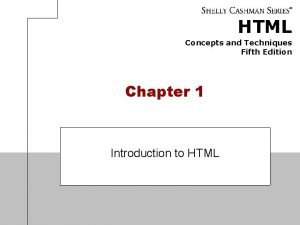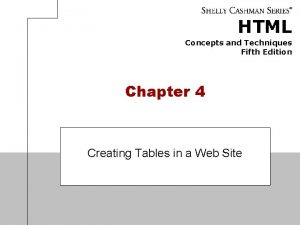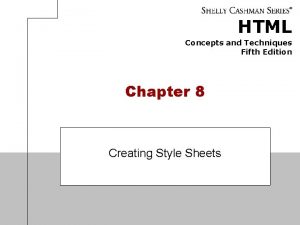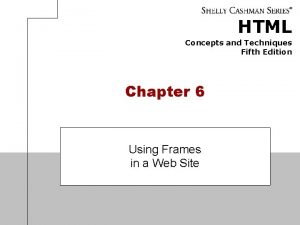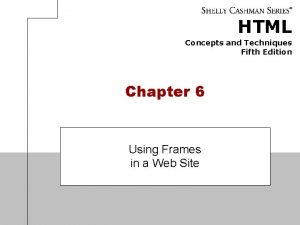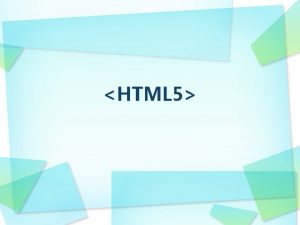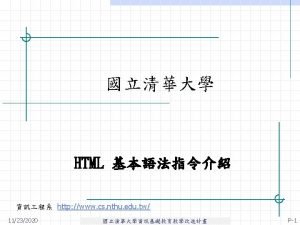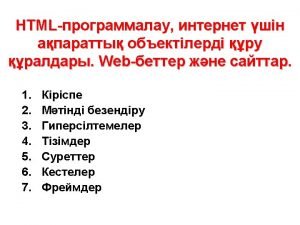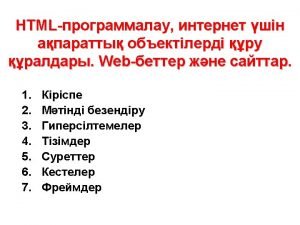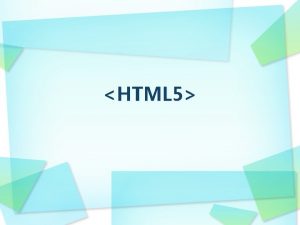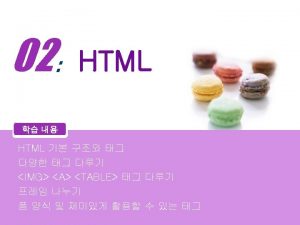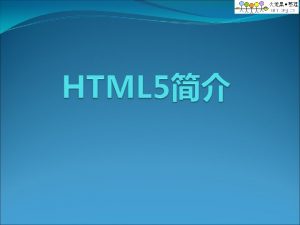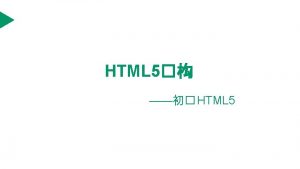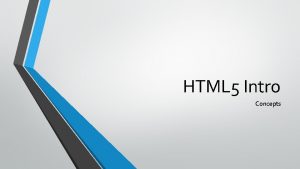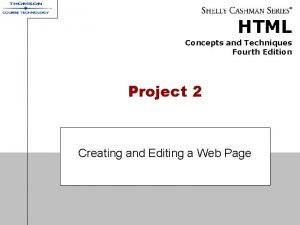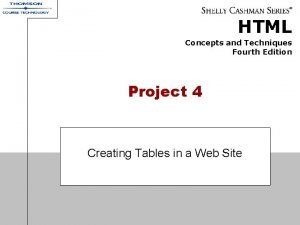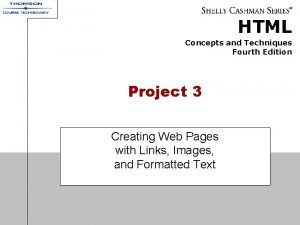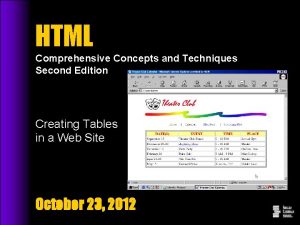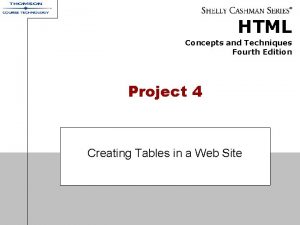HTML Concepts and Techniques Fifth Edition Chapter 1
































- Slides: 32

HTML Concepts and Techniques Fifth Edition Chapter 1 Introduction to HTML

Chapter Objectives • Describe the Internet and its associated key terms • Describe the World Wide Web and its associated key terms • Identify the types and purposes of Web sites • Discuss Web browsers and identify their purpose • Define Hypertext Markup Language (HTML) and the standards used for Web development • Discuss the use of Cascading Style Sheets in Web development • Define Dynamic Hypertext Markup Language (DHTML) and describe its relationship to HTML • Define Extensible Hypertext Markup Language (XHTML) and describe its relationship to HTML Chapter 1: Introduction to HTML 2

Chapter Objectives • Describe tools used to create HTML documents • Discuss the five phases of the Web development life cycle • Describe Web site design and the purpose of each Web site structure • Describe the importance of testing throughout the Web development life cycle Chapter 1: Introduction to HTML 3

What Is the Internet? • The Internet is a worldwide collection of computer networks that links millions of computers • A network is a group of two or more computers that are connected to share resources and information • The Internet backbone is a collection of highspeed data lines that connect major computer systems located around the world • An Internet Service Provider (ISP) is a company that has a permanent connection to the Internet backbone Chapter 1: Introduction to HTML 4

What Is the Internet? Chapter 1: Introduction to HTML 5

What Is the World Wide Web? • The World Wide Web, also called the Web, is the part of the Internet that supports multimedia and consists of a collection of linked documents • Hypertext Transfer Protocol (HTTP) is a set of rules for exchanging text, graphics, sound, and other multimedia files • Web pages are pages of information on the Web • A Web site is a related collection of Web pages • A home page is the first document users see when they access a Web site Chapter 1: Introduction to HTML 6

What Is the World Wide Web? Chapter 1: Introduction to HTML 7

Web Servers • Web pages are stored on a Web server, or host, which is a computer that stores and sends (serves) requested Web pages and other files • Publishing is copying Web pages and other files to a Web server Chapter 1: Introduction to HTML 8

Web Site Types and Purposes • Electronic commerce (e-commerce) is the buying and selling of goods and services on the Internet Chapter 1: Introduction to HTML 9

Web Browsers • A Web browser, also called a browser, is a program that interprets and displays Web pages and enables you to view and interact with a Web page – Microsoft Internet Explorer, Mozilla Firefox, and Apple Safari • A Uniform Resource Locator (URL) is the address of a document or other file accessible on the Internet – http: //www. scsite. com/html 5 e/index. htm • A hyperlink, also called a link, is an element used to connect one Web page to another Chapter 1: Introduction to HTML 10

Web Browsers Chapter 1: Introduction to HTML 11

What Is Hypertext Markup Language? • Web pages are created using Hypertext Markup Language (HTML), which is the authoring language used to create documents on the World Wide Web • HTML uses a set of special instructions called tags or markup to define the structure and layout of a Web document and specify how the page is displayed in a browser • HTML is platform independent, meaning you can create, or code, an HTML file on one type of computer and then use a browser on another type of computer to view that file as a Web page Chapter 1: Introduction to HTML 12

What Is Hypertext Markup Language? Chapter 1: Introduction to HTML 13

HTML Elements Chapter 1: Introduction to HTML 14

HTML Coding Practices Blank lines do NOT show up in the browser Section of code for a table Section of code for a bulleted list Start of paragraph Chapter 1: Introduction to HTML End of paragraph 15

HTML Versions • HTML has gone through several versions, each of which expands the capabilities of HTML • The most recent version of HTML is HTML 4. 01 • Word Wide Web Consortium (W 3 C) maintains HTML standards or specifications which are publicly available on its Web site. • Most web developers follow the W 3 C standards. Chapter 1: Introduction to HTML 16

Cascading Style Sheets • Until we get to Ch. 8, we will use tags to style what your web page looks like. • Appendix A in the back of the book provides you with a list of tags that we will use. • With Cascading Style Sheets (CSS), you write code that allows you to control an element within a single Web page or throughout the entire Web site – Recommended for large Web sites, so that you change a style ONCE instead of on each of the 50 pages or more. Chapter 1: Introduction to HTML 17

Dynamic HTML (DHTML) • Dynamic HTML (DHTML) describes a combination of HTML tags, CSS, and a scripting language such as Java. Script • DHTML allows users to create interactive, animated Web pages Chapter 1: Introduction to HTML 18

Extensible Hypertext Markup Language (XHTML) • Extensible Markup Language (XML) is a markup language that uses tags to describe the structure and content of a document, not the format • Extensible Hypertext Markup Language (XHTML) is a reformulation of HTML so it conforms to Extensible Markup Language (XML) rules (which are basically a stricter set of rules). Chapter 1: Introduction to HTML 19

Extensible Hypertext Markup Language (XHTML) Chapter 1: Introduction to HTML 20

Tools for Creating HTML Documents • A text editor is a program that allows a user to enter, change, save, and print text, such as HTML. We will use Notepad. • An HTML text editor is a program that provides basic textediting functions, as well as more advanced features such as color-coding for various HTML tags, menus to insert HTML tags, and spell checkers • An HTML object editor, such as Adobe Go. Live, provides the additional functionality of an outline editor that allows you to expand collapse HTML objects and properties, edit parameters, and view graphics attached to the expanded objects • A WYSIWYG editor is a program that provides a graphical user interface that allows a developer to preview the Web page during its development (Adobe Dreamweaver, Coffee. Cup HTML editor, etc. ) There are some free ones out there. Chapter 1: Introduction to HTML 21

Web Development Life Cycle Chapter 1: Introduction to HTML 22

Web Site Design and Development Chapter 1: Introduction to HTML 23

Web Site Design and Development • A linear Web site structure connects Web pages in a straight line • Appropriate if data needs to be read in a specific order. Chapter 1: Introduction to HTML 24

Web Site Design and Development • A hierarchical Web site structure connects Web pages in a tree-like structure • Works well if the main page has a table of contents page or an index to all other pages. Chapter 1: Introduction to HTML 25

Web Site Design and Development • A webbed Web site structure has no set organization • Data doesn’t need any specific order. Chapter 1: Introduction to HTML 26

Web Site Design and Development • A broad Web site is one in which the home page is the main index page, and all other Web pages are linked individually to the home page Chapter 1: Introduction to HTML 27

Web Site Design and Development • A deep Web site is one that has many levels of pages, requiring the user to click many times to reach a particular Web page • It is up to you as the designer to select the appropriate structure. Chapter 1: Introduction to HTML 28

Web Site Testing • Test a web site at various stages in the design process. Testing should be comprehensive. – Validate each web page thru the W 3 C markup validation service – Proofread content for grammar and spelling errors – Check all lists to make sure they aren’t broken – Test all forms and interactive elements – Test speed of all pages as they load – Print each page to see how printed pages look Chapter 1: Introduction to HTML 29

Web Site Testing • Usability is the measure of how well a product, such as a Web site, allows a user to accomplish his or her goals • Usability testing is a method by which users of a Web site or other product are asked to perform certain tasks in an effort to measure the product’s ease-of-use and the user’s perception of the experience Chapter 1: Introduction to HTML 30

Web Site Testing Example of some of the things you might put on a questionnaire for the user to complete as they are testing the web site. Chapter 1: Introduction to HTML 31

• For this chapter: – Learn it online – http: //scsite. com/html 5 e/learn – Go here and perform the following tasks… – Who wants to be a computer genius? – When you finish, we’ll print out the results (provided we add the printer correctly) OR let me take your grade from the screen. – Have a great Day! Chapter 1: Introduction to HTML 32
 Principles of marketing fifth european edition
Principles of marketing fifth european edition Appraisals in lazarus's theory of emotion
Appraisals in lazarus's theory of emotion Fundamentals of corporate finance fifth edition
Fundamentals of corporate finance fifth edition Fifth edition chemistry a molecular approach
Fifth edition chemistry a molecular approach Molecular biology
Molecular biology Molecular biology of the cell fifth edition
Molecular biology of the cell fifth edition Human anatomy fifth edition
Human anatomy fifth edition Human anatomy fifth edition
Human anatomy fifth edition Geography: realms, regions, and concepts (doc or html) file
Geography: realms, regions, and concepts (doc or html) file Human genetics concepts and applications 10th edition
Human genetics concepts and applications 10th edition Biology concepts and connections 4th edition
Biology concepts and connections 4th edition Canvas доска
Canvas доска Html
Html 12.html?action=
12.html?action= Bhtml?title=
Bhtml?title= 1
1 Data mining concepts and techniques slides
Data mining concepts and techniques slides Function of data mining
Function of data mining Concepts techniques and models of computer programming
Concepts techniques and models of computer programming Data mining slides
Data mining slides Data mining concepts and techniques slides
Data mining concepts and techniques slides Operating system concepts, 10th edition
Operating system concepts, 10th edition Operating system concepts 6th edition
Operating system concepts 6th edition Database system concepts seventh edition
Database system concepts seventh edition Using mis (10th edition) 10th edition
Using mis (10th edition) 10th edition Zulily case study
Zulily case study Senge fifth discipline summary
Senge fifth discipline summary Fifth chapter menu
Fifth chapter menu 5th commandments of god
5th commandments of god The fifth, sixth, seventh, and eighth amendments protect *
The fifth, sixth, seventh, and eighth amendments protect * Fonction technique scooter
Fonction technique scooter Chapter 17 promotional concepts and strategies answer key
Chapter 17 promotional concepts and strategies answer key Types of promotion
Types of promotion










